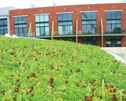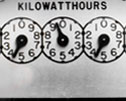This month, the International Code Council (ICC) is publishing Public Version 2.0 of the draft International Green Construction Code (IGCC) for public review. When the final version is published in 2012, it will provide minimum requirements for sustainable construction. Because adoption of IGCC likely will significantly affect the construction industry, I encourage you to be aware of its development.
IGCC
IGCC is an "overlay code," meaning it is intended to be used with ICC's other model codes, including the International Building Code and International Energy Conservation Code. IGCC is intended to address sustainability requirements for buildings, including building siting, construction and operation.
IGCC will provide minimum levels of sustainability and allow jurisdictions to adopt requirements providing higher levels of sustainability. For example, the draft includes a minimum provision that no less than 35 percent of nonhazardous construction waste be recycled. The jurisdictional requirements allow jurisdictions to select higher levels for recycling—up to 50 or 65 percent—if desired. As a result, jurisdictions that adopt IGCC may have noticeably different compliance levels.
The draft also includes options for project electives that become mandatory only as selected and indicated by a building owner or designer. Examples of project electives include use of highly reflective roof coverings, vegetative roof systems and additional thermal insulation. For many U.S. regions, use of the additional thermal insulation elective would require roof assemblies to have U-values as low as 0.017 (which is an R-value of 58.8).
Chapter 6—Energy Conservation, Efficiency and Atmospheric Quality provides provisions for reducing buildings' energy consumption. Multiple compliance paths are provided to allow flexibility. If the most popular prescriptive- or performance-based compliance paths are chosen, use of a renewable energy system would be required. Rooftop photovoltaic (PV), solar water heating, solar thermal and wind-generation systems are recognized in the draft as suitable renewable energy systems for buildings.
Initial public hearing
NRCA participated in the initial public hearing on IGCC's Public Version 1.0. During that hearing, NRCA pointed out a number of conflicts between the draft's roofing-related provisions and provisions in ICC's other model codes. For example, the draft IGCC requirements for vegetative roof systems' nonvegetative borders conflict with those that will be required by the International Fire Code's 2012 edition. Given IGCC is intended to be an overlay code, such conflicts are of concern.
Attempting to resolve these roofing-related conflicts will be a primary goal for NRCA during the next round of IGCC's development.
Next steps
The deadline for submitting code change proposals to ICC on IGCC's Public Version 2.0 is Jan. 3, 2011.
Code change proposals will be heard at the 2011 IGCC Code Development Hearing May 16-22, 2011, in Dallas. ICC will take final action on IGCC at its 2011 Annual Meeting, which will be held Nov. 2-6, 2011, in Phoenix. IGCC is scheduled to be published in March 2012.
Closing thoughts
IGCC could make energy-efficiency and sustainability-based initiatives, such as increased thermal insulation, reflective roof surfacings, vegetative roof systems and roof-mounted PV systems, minimum requirements for code compliance.
I encourage you to be aware of IGCC's development and the likelihood of its adoption in the jurisdictions where you conduct business.
Mark S. Graham is NRCA's associate executive director of technical services.



